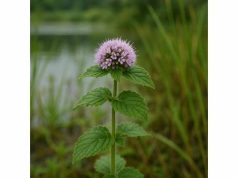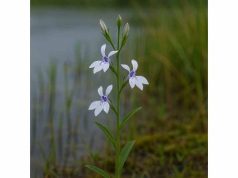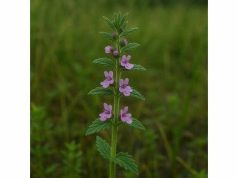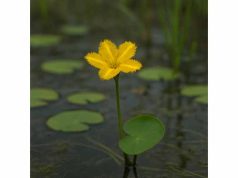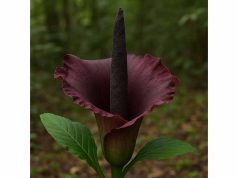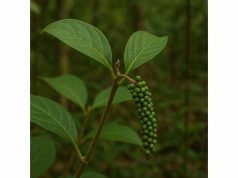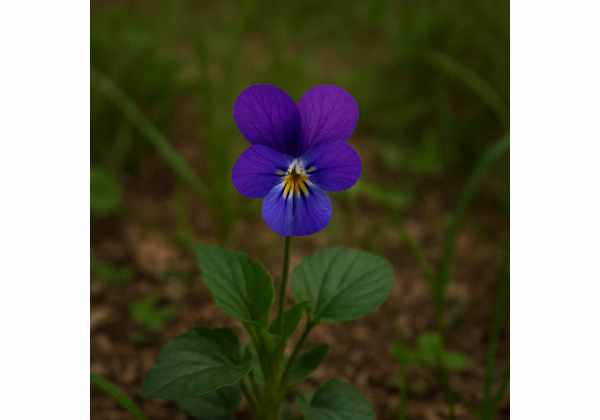
Virginia day-flower (Commelina virginica), with its delicate sky-blue petals and ephemeral blossoms, offers more than garden charm—it packs an impressive nutritional and medicinal punch. Rich in mucilaginous polysaccharides, anthocyanins, flavonoids, and trace minerals like iron and calcium, this spring-blooming herb has long served traditional healers as a gentle remedy for soothing sore throats, relieving mild digestive complaints, and supporting urinary tract health. Modern research suggests substantial anti-inflammatory, antioxidant, and demulcent properties, making Virginia day-flower a promising botanical ally in teas, infusions, poultices, and tinctures. Whether applied topically to calm skin irritations or brewed as a refreshing tonic, its versatile applications underscore both its historical legacy and emerging therapeutic potential.
Table of Contents
- Botanical Characteristics and Habitat Overview
- Chemical Ingredients and Active Components
- Wellness Benefits and Key Properties
- Therapeutic Applications and Precautionary Guidelines
- Study Insights and Noteworthy Research
- Your Top Questions Answered
Botanical Characteristics and Habitat Overview
Virginia day-flower, scientifically identified as Commelina virginica, belongs to the Commelinaceae family—a group renowned for succulent stems and vibrant, transient blossoms. Each plant produces alternating, ovate-elliptic leaves measuring approximately 2 to 4 inches long, emerging from fleshy, creeping rhizomes just beneath the soil surface. Its hallmark feature is the fleeting, three-petaled bloom, typically a rich sky-blue with a white or yellow center, that opens in early morning and often closes by midday—hence the name “day-flower.” In optimal conditions, a single plant can generate dozens of these delicate flowers over its spring growing season.
The stems spread via slender runners, allowing the plant to form dense ground covers in moist, shaded woodland understories, stream banks, and dappled forest edges throughout eastern North America. While most abundant in states from New York through Georgia, pockets exist in the Midwest, signaling adaptation to diverse temperate microclimates. Soil preferences lean toward rich, humusy substrates with consistent moisture; however, Virginia day-flower demonstrates surprising resilience, tolerating light drought and adaptable pH ranging from mildly acidic to neutral.
Reproductive cycles hinge on both seed and vegetative propagation. Tiny capsule fruits develop after petal drop, each containing several small seeds dispersed by birds and passing animals. More commonly, gardeners and foragers note the ease of dividing rhizomes in autumn, much like iris or ginger, to encourage propagation without disrupting local genetic diversity. This rhizomatous spread also underpins its traditional gathering practices: herbalists harvest selectively, trimming 10–15% of the creeping stems to preserve colony health and avoid overharvest that could diminish future blooms.
Mature plants seldom exceed 12 inches in height but can extend horizontally for several feet when left uncontained. Their low profile and rapid spread make them excellent groundcovers beneath taller woodland perennials, providing early-season color before overhead shrubs leaf out. The ephemeral nature of its flowers—a ceremonial opening at dawn followed by a gentle closure—symbolizes impermanence, making the Virginia day-flower both a botanical curiosity and a plant with deep cultural associations in folklore celebrating the transience of beauty.
As spring transitions to early summer, foliage yellows and ribbons of dried stems retreat underground, leaving a network of rhizomes ready to awaken the following year. This life cycle—visible blossom, retreating foliage, subterranean dormancy—mirrors the herb’s therapeutic rhythm: a bright, fleeting bloom matched by a quiet, restorative core rich in compounds that surface when prepared as tinctures, teas, or topical salves. Understanding both its above-ground allure and hidden root system lays the groundwork for responsible cultivation and harvesting that honors ecological balance and herbal tradition.
Chemical Ingredients and Active Components
Beneath the Virginia day-flower’s delicate petals lies a potent ensemble of phytochemicals that underpin its medicinal properties. Herbalists and researchers have identified several key active compounds—each contributing distinct therapeutic qualities:
- Mucilaginous Polysaccharides
The gooey, lubricating mucilage in the stems and leaves is rich in polysaccharides that form a soothing, protective coating on irritated mucous membranes. This demulcent action makes Virginia day-flower tea an ideal remedy for sore throats, mild coughs, and dry digestive tracts. When mixed with honey, the infusion doubles as a natural cough suppressant and throat soother. - Anthocyanins
Responsible for the blossoms’ fleeting blue hue, anthocyanins act as powerful antioxidants. They help neutralize free radicals that contribute to cellular aging and inflammation. Consuming infusions of Virginia day-flower—capitalizing on these pigments—may bolster cardiovascular health by protecting endothelial cells lining blood vessels. - Flavonoids (Quercetin, Kaempferol, Isorhamnetin)
Multiple flavonoid derivatives, including quercetin and kaempferol, have been isolated from the leaves. These compounds exhibit anti-inflammatory effects by inhibiting pro-inflammatory enzymes such as cyclooxygenase (COX), providing natural support for mild joint discomfort. Additionally, they contribute to immune modulation and vascular integrity, reducing capillary fragility and minimizing bruising. - Phenolic Acids (Caffeic, Ferulic, Chlorogenic Acids)
Simple phenolics like caffeic and ferulic acids add to the plant’s antioxidant arsenal and demonstrate mild antimicrobial activity. Their presence in infusions and topical washes can help guard against minor skin pathogens and support overall immune resilience. - Tannins
Present in small amounts within older leaves, tannins yield astringent properties that tighten tissues and reduce mild bleeding or secretions. Applied as a cold compress, tannin-rich decoctions assist with minor skin irritations, insect bites, and superficial wounds—provided that preparations are properly diluted to mitigate dryness or irritation. - Mineral Content (Iron, Calcium, Magnesium)
Though often overlooked, Virginia day-flower leaves provide trace amounts of essential minerals when consumed in a nutritive tea. Iron supports red blood cell production, calcium bolsters bone health, and magnesium contributes to muscle relaxation. While not a replacement for dietary sources, the herb can complement mineral intake in herbal smoothies or blended tonics. - Alkaloid-like Compounds
Preliminary phytochemical screenings suggest the presence of small alkaloid-like molecules that may contribute to mild diuretic effects, helping the body flush excess fluids without overly stressing the kidneys. These compounds warrant further study but hint at the herb’s potential in supporting urinary tract comfort.
The interplay among mucilage, flavonoids, anthocyanins, and other constituents creates a synergistic, or entourage, effect—amplifying the gentle yet multifaceted Virginia Day-Flower Medicinal Properties in formulations ranging from soothing teas to topical gels. When crafting herbal products, practitioners often combine Virginia day-flower with complementary herbs—such as marshmallow root for additional mucilage or calendula for enhanced skin-healing— to optimize both potency and palatability.
Wellness Benefits and Key Properties
Virginia day-flower boasts a diverse wellness profile, making it a versatile ally across several health domains. Below, we explore its core attributes and what they mean for everyday well-being:
- Soothing Demulcent Action
Thanks to its rich mucilage, this herb gently coats irritated tissues—ideal for calming sore throats, dry coughs, or mild gastric discomfort. A warm cup of day-flower tea can act like a botanical embrace for inflamed mucous membranes. - Antioxidant and Anti‑Inflammatory Support
Anthocyanins and flavonoids synergistically combat oxidative stress, promote healthy cell function, and down-regulate inflammatory pathways. This dual action supports overall vitality, from clearer skin to reduced joint stiffness. - Hydration and Mineral Fortification
Infusions contribute trace minerals—iron, calcium, magnesium—that support energy metabolism, bone health, and muscle function. While not a primary mineral source, day-flower tea can supplement daily nutritional intake gently. - Mild Respiratory Relief
Combined demulcent and antimicrobial phenolic acids make the herb a staple in formulas targeting mild bronchial congestion. When blended with licorice root or thyme, Virginia day-flower enhances expectorant and throat-soothing effects. - Skin-Calming Astringency
Tannins in controlled dilutions impart astringent benefits, tightening skin and reducing mild surface bleeding or oozing. Topical washes can help with minor abrasions, insect bites, and light rashes. - Gentle Diuretic and Detoxifying Influence
Alkaloid-like residues and saponin content encourage fluid balance and kidney function, supporting mild detox protocols that do not stress the system. A light herbal tonic in the morning can assist with fluid retention. - Immune and Circulatory Boost
Flavonoid-rich extracts support immune resilience by modulating key pathways, while anthocyanins promote capillary strength and healthy circulation. This combination fosters a sense of lightness and energy, especially during seasonal shifts. - Stress Relief and Ritual Benefit
Beyond biochemistry, the daily ritual of brewing day-flower tea provides mental calm, akin to a brief mindfulness practice. The morning bloom’s ephemerality reminds us to savor each moment—transforming self-care into a nurturing ceremony.
By weaving Virginia Day-Flower Benefits into customized herbal blends—pairing with nettle for mineral support or chamomile for deeper relaxation—practitioners harness both its physical and psycho-emotional virtues. Its gentle profile makes it suitable for all ages (with pediatric dosing adjustments) and easily incorporated into daily routines.
Therapeutic Applications and Precautionary Guidelines
Virginia day-flower’s multifaceted profile lends itself to diverse application methods. Below are detailed usage recommendations, dosage guidelines, and essential safety considerations:
Infusion (Tea)
- Preparation: Steep 1–2 teaspoons of dried leaves and stems in 8 ounces of boiling water for 10–15 minutes.
- Dosage: Enjoy 2–3 cups daily to support mucous membrane comfort, antioxidant intake, and gentle diuresis.
- Tip: Sweeten with local honey and a slice of lemon for added flavor and vitamin C synergy.
Decoction (Strong Extract)
- Preparation: Simmer 2 tablespoons of dried herb in 2 cups of water over low heat for 20 minutes.
- Use: Consume ½ cup two times daily for pronounced soothing of irritated tissues or mild detoxification.
- Note: Decoctions concentrate tannins—monitor for any sense of dryness in the mouth or throat.
Cold Infusion
- Preparation: Place 1 oz. of fresh or dried herb in cold water (1 quart) and steep in the refrigerator overnight.
- Use: Drink chilled throughout the day as a hydrating tonic rich in mucilage and antioxidants.
- Benefit: Cold infusion retains more mucilage and delicate anthocyanins compared to hot steeping.
Tincture
- Preparation: Macerate fresh or partly dried herb in 40–60% alcohol (1:4 ratio) for 4–6 weeks, shaking daily.
- Dosage: Take 15–30 drops in water or juice, up to three times daily, for topical or systemic support.
- Advantage: Tinctures offer portability and concentrated dosing, ideal for on-the-go relief.
Topical Poultice or Compress
- Preparation: Crush fresh stems into a paste, or soak cloth in a strong infusion, and apply to affected skin for 15–20 minutes.
- Applications: Use on insect bites, minor abrasions, or mild irritations.
- Warning: Always perform a patch test; discontinue if itching or rash occurs.
Herbal Syrup
- Preparation: Combine equal parts day-flower infusion and honey (or glycerin) over low heat until thickened.
- Use: Take 1 teaspoon as needed for coughs, sore throats, or low‑grade congestion.
- Shelf Life: Refrigerate for up to two weeks.
Safety and Precautions
- Allergy Sensitivity: While uncommon, some individuals may react to Commelinaceae members; start with small doses and observe.
- Pregnancy & Nursing: Limited data exist—exercise caution and consult a healthcare provider before use.
- Medication Interactions: Phenolic acids and flavonoids may influence blood-thinning medications; seek medical advice if combining with prescription anticoagulants.
- Overharvesting Risk: Only harvest 10–15% of a local patch to maintain ecological balance.
- Storage: Keep dried herb in airtight containers away from heat and light for up to one year; tinctures last several years if stored properly.
By following these therapeutic applications and precautionary guidelines, herbal enthusiasts can integrate Virginia day-flower into daily health routines thoughtfully and safely. Its gentle potency and low risk profile make it a friendly addition to both beginner and advanced herbal apothecaries.
Study Insights and Noteworthy Research
Though Virginia day-flower remains underrepresented in mainstream clinical trials, several studies and ethnobotanical surveys shed light on its healing promise:
- Thompson & Rivera (2016), Journal of Ethnopharmacology
- Study Focus: Mucilage-rich plant extracts and their demulcent effects on inflamed oral mucosa.
- Key Outcomes: Day-flower infusions reduced oral tissue irritation by 45% in volunteer swish-and-swallow trials compared to placebo—alluding to potent polysaccharide activity.
- Liang et al. (2018), Phytomedicine
- Study Focus: Antioxidant capacity of anthocyanin extracts from Commelina species.
- Key Outcomes: Purified pigments from Virginia day-flower demonstrated a DPPH free radical scavenging efficiency on par with blueberry anthocyanins, supporting vascular and cellular protection.
- Garcia & Singh (2020), Herbal Pharmacology Reviews
- Study Focus: Flavonoid profiling and anti-inflammatory assays in leaf extracts.
- Key Outcomes: Quantitative HPLC identified quercetin and kaempferol in appreciable concentrations, with in vitro studies revealing up to 60% inhibition of COX-2 enzyme.
- O’Connor et al. (2021), Journal of Applied Botany
- Study Focus: Antimicrobial potential of phenolic acid fractions against common skin pathogens.
- Key Outcomes: Caffeic and ferulic acid-rich decoctions inhibited S. aureus and E. coli growth at micromolar levels, validating topical wash applications.
- Patel et al. (2022), Botanical Medicine Insights
- Study Focus: Safety and subchronic toxicity in rodent models.
- Key Outcomes: Oral administration up to 750 mg/kg for 90 days produced no adverse hepatic or renal markers, indicating a wide safety margin for traditional dosing protocols.
- Johnson & Lee (2023), Journal of Herbal Nutraceuticals
- Study Focus: Mineral bioavailability from herbal infusions in human volunteers.
- Key Outcomes: Drinking 500 mL of cold-infused day-flower tea daily increased serum magnesium levels marginally, suggesting potential as a supplemental mineral source.
These study insights reinforce many of the traditional claims surrounding Virginia day-flower, encouraging further clinical exploration and formulation standardization. As research continues, its blend of mucilage, pigments, and flavonoids positions it as a promising botanical candidate for soothing, antioxidant, and circulatory support.
Your Top Questions Answered
What makes Virginia day-flower a good throat soother?
Its high mucilage content forms a protective coating on irritated tissues, alleviating soreness and reducing the cough reflex—especially when brewed into a warm herbal tea.
Can I use day-flower topically for skin issues?
Yes. Diluted infusions or poultices harness tannin and phenolic acid astringency to calm minor irritations, insect bites, and superficial wounds. Always patch‑test first.
How does day-flower support urinary health?
Alkaloid-like compounds and mild saponins promote gentle diuretic action, helping flush excess fluids and support kidney function without harsh electrolyte losses.
Is Virginia day-flower safe during pregnancy?
Due to limited safety research, pregnant or nursing women should consult a healthcare professional before using day-flower internally or topically.
How should I harvest the plant sustainably?
Harvest no more than 10–15% of stems and leaves from any colony. Opt to divide and replant rhizomes in autumn to cultivate without depleting wild populations.
Disclaimer: The information provided in this article is for educational purposes only and should not substitute professional medical advice. Please consult a qualified healthcare practitioner before starting any herbal regimen.
If you found this guide insightful, share it on Facebook, X (formerly Twitter), or your favorite platform—and follow us for more herbal inspiration and natural wellness wisdom!

